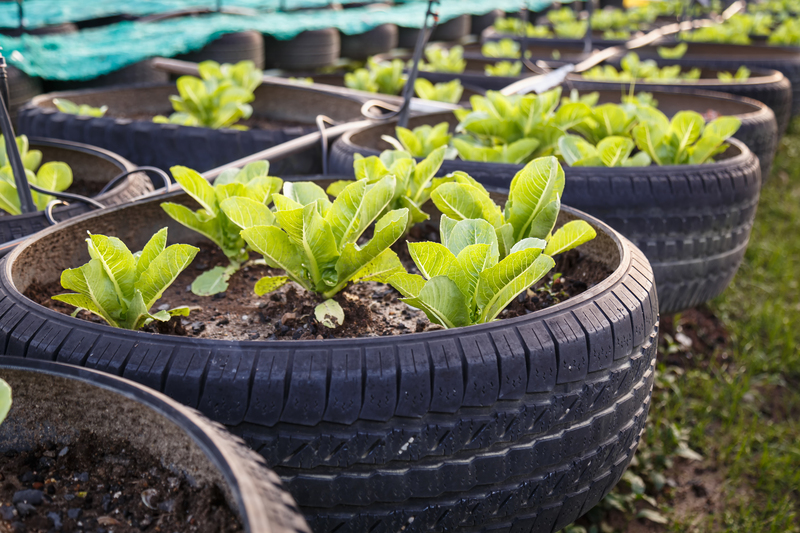Steps for Ethical and Safe PPE Waste Management
As the global demand for Personal Protective Equipment (PPE) surges in response to health crises and industrial growth, ethical and safe management of PPE waste has become a significant concern. Managing PPE waste responsibly is crucial for safeguarding public health, curbing environmental pollution, and promoting sustainable development. In this comprehensive guide, we outline essential steps for effective, compliant, and safe PPE waste disposal based on the latest industry standards and ethical considerations.

Understanding PPE Waste: Types and Impact
PPE waste includes single-use items such as face masks, gloves, gowns, face shields, respirators, and shoe covers that are discarded after use, primarily in healthcare, laboratories, manufacturing, and public settings. With billions of PPE items generated daily worldwide, ineffective waste management poses risks, including:
- Environmental pollution (plastic and microplastic contamination)
- Transmission of infectious diseases to the public, animals, and waste handlers
- Resource wastage and increased carbon footprint
- Harm to marine and terrestrial ecosystems
Given these risks, adopting ethical PPE waste management practices is vital for individuals, organizations, and governments alike.
Why is Ethical PPE Waste Management Important?
- Protects Human Health: Proper segregation, handling, and disposal reduce exposure to infectious agents and chemicals.
- Safeguards the Environment: Limits the entry of non-biodegradable materials into landfills, waterways, and the general ecosystem.
- Enhances Social Responsibility: Demonstrates commitment to sustainable practices and public welfare.
- Meets Legal and Regulatory Requirements: Adheres to local, national, and international environmental laws and standards.
Comprehensive Steps for Ethical and Safe PPE Waste Management
1. Develop a PPE Waste Management Plan
- Formulate a waste management policy addressing all types of PPE used.
- Assign responsibilities to trained staff or management teams.
- Define segregation, collection, storage, transport, treatment, and disposal protocols.
- Align with guidelines from agencies such as the World Health Organization (WHO), Centers for Disease Control and Prevention (CDC), and local regulatory bodies.
2. Training and Awareness Programs
- Conduct regular training sessions for employees, waste handlers, and cleaning personnel.
- Educate about the significance of proper PPE waste segregation and safe disposal.
- Encourage reporting of unsafe or unethical disposal practices.
3. Segregation at Source
- Use color-coded and clearly labeled bins for PPE waste segregation:
- Yellow bags/containers: For contaminated or clinical PPE (used in healthcare or infected zones)
- Blue/Green bins: For non-infectious, general single-use PPE
- Avoid mixing PPE waste with general municipal waste to prevent contamination.
4. Safe Collection and Handling
- Ensure that waste handlers use appropriate PPE while collecting and managing waste.
- Seal containers/bags tightly to avoid spillage or exposure.
- Minimize direct contact with used PPE and implement touch-free technologies if possible.
5. Storage and Transport
- Store PPE waste in well-ventilated, secure areas away from food or potable water storage.
- Limit waste storage time to reduce the risk of pathogen spread (preferably less than 24 hours).
- Use leak-proof, puncture-resistant containers for transportation.
- Provide regular disinfection for storage areas and vehicles.
6. Treatment and Disposal
- Evaluate various PPE disposal methods:
- Incineration: High-temperature burning destroys pathogens but must use modern, emission-controlled incinerators to limit air pollution.
- Autoclaving: Steam sterilization renders PPE waste non-infectious; suitable for many medical facilities.
- Landfilling: Only for non-infectious, inert PPE waste; select engineered landfills to prevent leachate and environmental contamination.
- Chemical Disinfection: For certain PPE types, chemical treatments can neutralize pathogens before disposal.
- Document and monitor each step to ensure compliance with waste regulations.
7. Recycling and Reuse Opportunities
- Explore recycling programs for uncontaminated, single-material PPE (e.g., some face shields, certain plastic goggles).
- Partner with technology firms engaged in recycling plastics from PPE waste into useful products such as benches, road surfaces, or new PPE.
- Never attempt to recycle contaminated PPE without proper decontamination.
8. Monitoring, Evaluation, and Continuous Improvement
- Maintain records of PPE waste volumes, treatment methods, and disposal outcomes.
- Conduct audits and risk assessments periodically.
- Solicit feedback from staff, waste handlers, and community stakeholders.
- Update policies and practices in line with emerging technologies, regulations, and best practices.
Best Practices for PPE Waste Management in Different Settings
Healthcare Facilities
- Follow strict biomedical waste protocols as stipulated by local and national guidelines.
- Ensure immediate segregation at the point of PPE removal.
- Utilize dedicated staff for PPE waste handling and disposal.
Industrial and Occupational Settings
- Establish PPE collection points at entrances and exits to minimize on-site contamination.
- Offer frequent training sessions on the risks of improper PPE disposal.
- Incorporate PPE waste management in workplace safety audits.
Public Places and Households
- Provide clear disposal instructions via signage in public locations like transport hubs, shops, and parks.
- Distribute designated disposal bags for households caring for ill members.
- Encourage the use of reusable, washable PPE where feasible to reduce waste.
Regulatory Guidance and International Frameworks
Staying compliant with regulations related to safe PPE waste management is essential. Key documents and frameworks include:
- WHO "Guidelines on the Management of Personal Protective Equipment"
- Guidelines from national agencies like the CDC and Environmental Protection Agency (EPA)
- Biosafety guidance for COVID-19 PPE waste from the UN Environment Programme (UNEP)
- The Basel Convention's amendments on plastic waste management
Review these standards regularly to ensure your PPE waste management process meets global best practices.
Innovation in PPE Waste Reduction and Management
Technological advances are transforming ethical PPE waste management. Notable innovations include:
- PPE made from biodegradable or compostable materials
- Automated waste segregation and robotic handling technologies
- Advanced recycling methods converting PPE plastic into new polymers or fuels
- Mobile waste treatment units for remote or resource-constrained areas
By adopting sustainable approaches and encouraging innovation, organizations can minimize the environmental impact of PPE waste.
Challenges and Solutions in PPE Waste Management
- Lack of Awareness: Increase public education through media campaigns and school curricula.
- Insufficient Infrastructure: Invest in waste treatment plants and recycling centers; collaborate with private-sector partners.
- Improper Disposal in Public Places: Install more accessible PPE disposal bins; strictly enforce littering penalties.
- Limited Recycling Technology: Support research and subsidize the use of biodegradable PPE products.
Ethical Considerations in PPE Waste Disposal
Beyond compliance, ethical PPE waste disposal means considering the well-being of all stakeholders and the planet.
- Protect the dignity, safety, and rights of waste pickers and sanitation workers.
- Promote transparency in waste disposal practices - report openly and seek continuous improvement.
- Ensure community engagement and include marginalized voices in decision-making processes.
- Choose eco-friendly PPE alternatives where available.
- Mitigate any negative impacts on vulnerable environments and populations.
PPE Waste Management During Pandemics
The COVID-19 pandemic has shown how quickly PPE waste management systems can become overwhelmed. Special PPE waste management steps during pandemics include:
- Implement rapid-response disposal methods, prioritizing infectious PPE waste containment.
- Enhance training, monitoring, and resource allocation to match waste volume surges.
- Encourage the use of reusables, such as washable masks, for non-medical use.
Governments and healthcare providers should anticipate and plan for future spikes, ensuring that their systems remain ethical and safe even under duress.

Conclusion: The Path to Safer and Greener PPE Waste Management
Ethical and safe PPE waste management is a shared responsibility requiring coordinated action at individual, organizational, and governmental levels. By following best practices and adapting to new challenges, we can combat environmental pollution, reduce public health risks, and move towards a more sustainable future. Whether you're a frontline healthcare worker, a business owner, or a concerned citizen, your commitment to proper PPE waste handling makes a difference.
Empower your organization and community with education, awareness, and practical solutions. Remember, every step taken towards responsible PPE waste management is a step towards a healthier planet and a safer society.
Frequently Asked Questions (FAQs) About PPE Waste Management
1. Can single-use PPE items be recycled?
Certain single-use items can be recycled if they're free from contamination and made of recyclable materials. However, medical or infected PPE should be incinerated or autoclaved.
2. What is the most environmentally friendly way to dispose of PPE waste?
The best option is to minimize use where possible, select biodegradable PPE, and use advanced, eco-friendly treatment technologies. Avoid open burning or improper landfilling.
3. How can communities participate in safe PPE disposal?
Communities can set up designated bins, run awareness campaigns, and collaborate with local authorities to ensure waste is correctly treated and disposed of.
4. Why is it essential to separate PPE waste from general household waste?
Segregation prevents the spread of disease, protects waste workers, and ensures proper treatment and disposal pathways for potentially hazardous materials.
By implementing these comprehensive steps for ethical and safe PPE waste management, we can overcome the challenges posed by rising PPE use and build a healthier, cleaner, and more responsible world for all.
